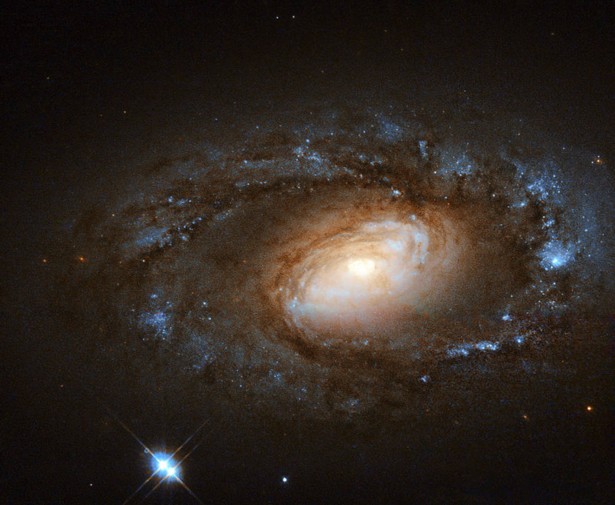
When a star is born, it is the result of immense pressure on hydrogen atoms until fusion reactions begin. And for many stars, a pancake-shaped glob of gas and dust particles—a feature called a circumstellar disk—ends up hanging around for a few million years after formation.
“It’s basically a flat disc-like object surrounding the star, and the disc is rotating around the star,” said Robin Dong, the author of a new paper about circumstellar disks in The Astrophysical Journal Letters, in a live-streamed conversation about his findings on Thursday.
In recent years, astronomers using a mix of imaging and computer modeling have tried to better understand the features of these spiral disks. Huge ground telescopes have captured images of the disks around two young stars, MWC 758 and SAO 206462, about 400 light years away from Earth. Some planetary scientists had theorized that circumstellar disks contain small planets. Now, the research by Dong and his colleagues suggests that giant unseen planets, 10 times the size of Jupiter, are actually generating the spirals.
The finding comes from simulations of how a star’s radiation spreads through a disk. In some cases, patterns of gaps and rings suggest the presence of giant and otherwise-invisible planets. “This is useful since a lot of times we cannot directly see the objects we are interested in,” said Zhaohuan Zhu, one of the co-authors on the paper, in an email. “We have to use indirect methods to infer its properties.”
The idea that massive planets could be detected this way is a big deal, and not just because of the potential existence of the planets. “In the future,” Dong says, “this could be another way to detect planets which otherwise we cannot see.”
In turn, finding newly formed planets in the disks around brand-new stars offers an unprecedented look at how and when planets are made.“You can’t learn a lot about how planets form by observing our our solar system,” said Tony Darnell, a spokesman for the Space Telescope Science Institute, in the webcast Thursday.“But you can by looking at these kinds of systems.”
